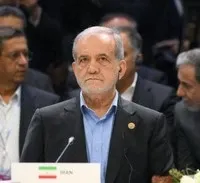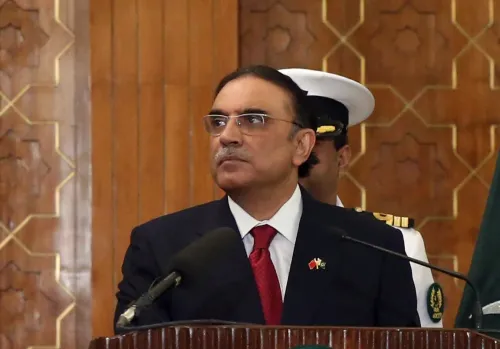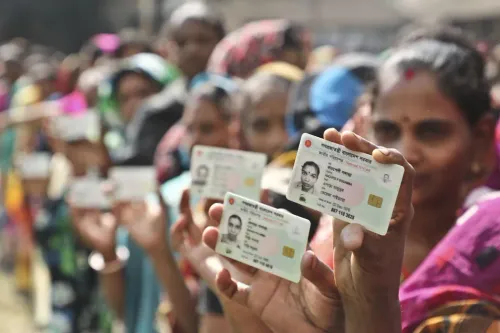Is Iran Facing a 'Serious' Water Crisis?

Synopsis
Key Takeaways
- Iran's water crisis is critical and impacting many regions.
- Efforts are being made to transfer water from dams to affected areas.
- Current water reserves are alarmingly low at 42% capacity.
- Drought conditions are unprecedented and worsening.
- Citizens are urged to conserve water immediately.
Tehran, Aug 11 (NationPress) Iran's President Masoud Pezeshkian has issued a warning regarding a critical water crisis affecting various regions, particularly the capital city of Tehran.
The remarks were made during a meeting with several media leaders in Tehran on Sunday, where he underscored the actions his administration is taking to address this pressing issue, as reported by the semi-official Fars news agency.
Pezeshkian stated that efforts are being made continuously to transfer water from the nearby Taleqan Dam to Tehran, aiming to secure adequate water supplies for the province as autumn approaches. However, he admitted that it remains uncertain whether this initiative will truly alleviate the capital's water crisis, noting a significant 45 percent drop in the region's precipitation, according to Xinhua news agency.
The current water reserves in Iranian dams stand at merely 42 percent of their total capacity, as reported by the state-run IRIB news agency.
Since the onset of the current water year, which commenced on September 22, 2024, only 23.56 billion cubic meters (bcm) of water have entered the nation's dams—a 42 percent decrease compared to the same period last year, which recorded 40.55 bcm.
At a press conference in Tehran on Saturday, Mohammad-Taqi Hosseinzaden, CEO of Tehran Water and Wastewater Company's district 5, mentioned that the water reserves in Tehran's dams are likely to last until the end of September, urging residents to conserve water.
The water crisis primarily results from an unprecedented drought that has affected the nation since the start of the current water year, according to the Iran Water Resources Management.
In response to the shortages, Iranian authorities have implemented measures such as office closures and reduced working hours in the impacted cities as temporary solutions.









